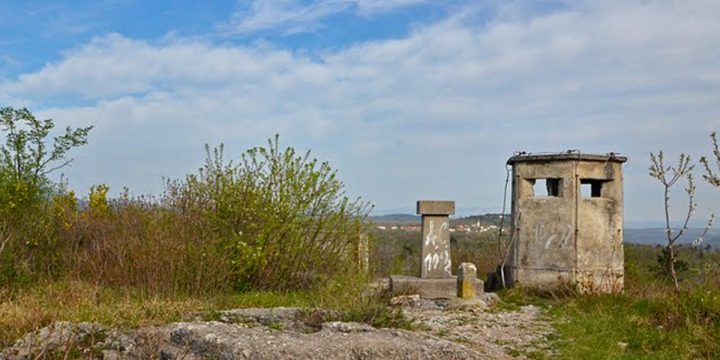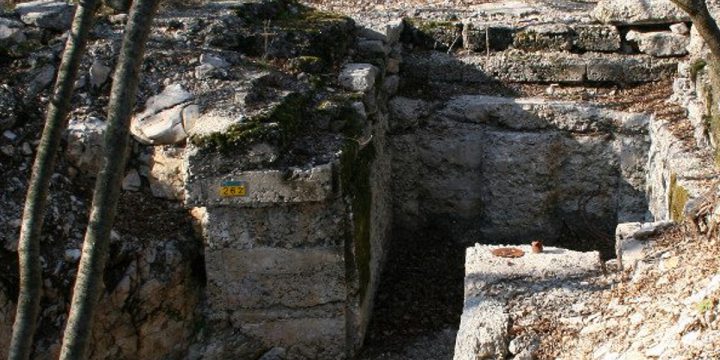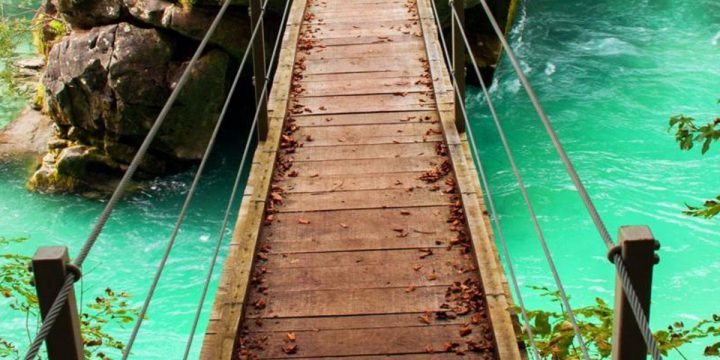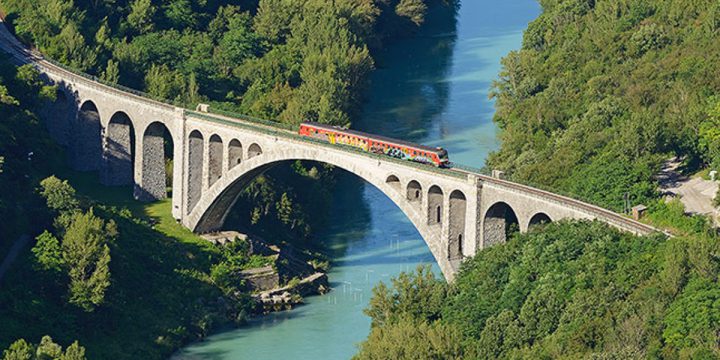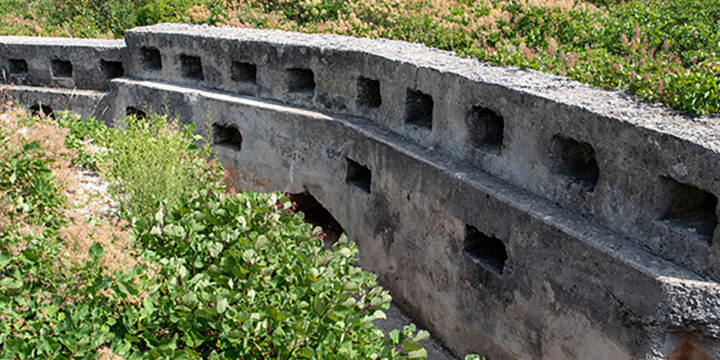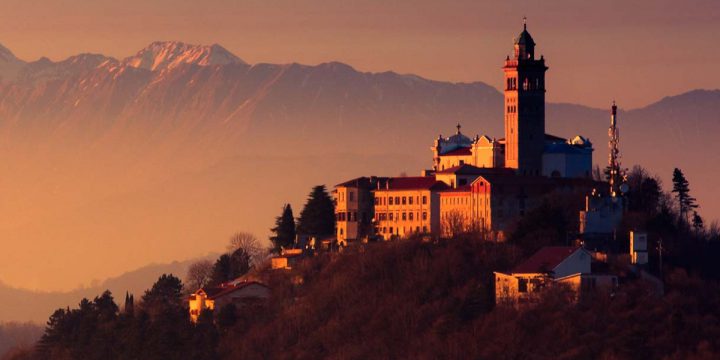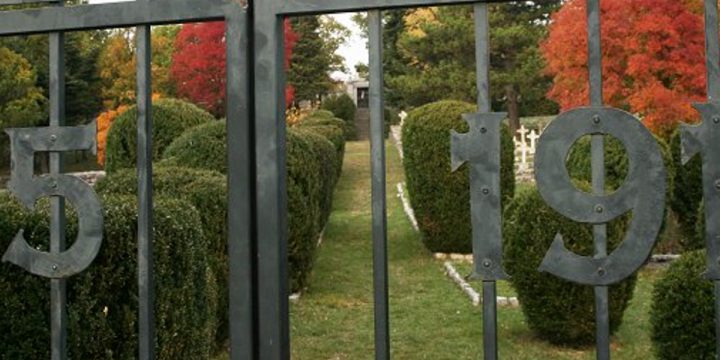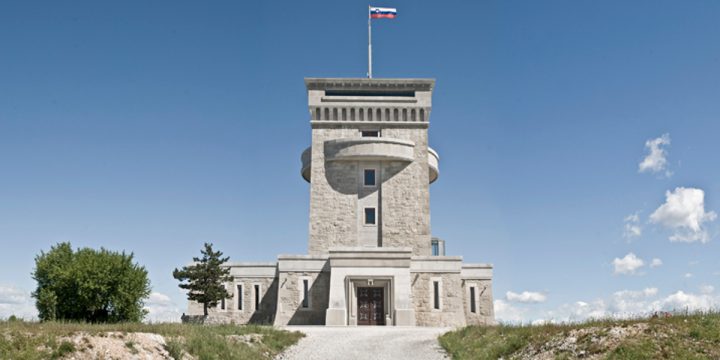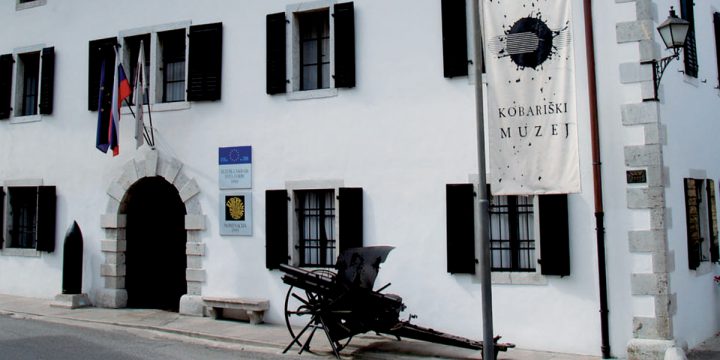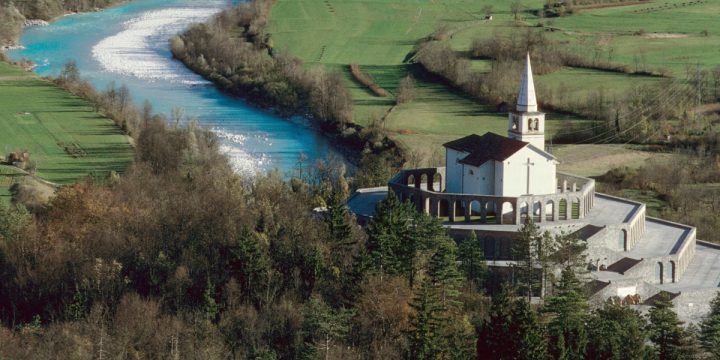
Kostnica s Cerkvijo Sv. Antona / Sacrario dei Caduti di Caporetto
Cerkev Svetega Antona Padovanskega / Sacramento de Caduti di Caporetto The military memorial Caporetto or Saint Anthony's sanctuary is an Italian military memorial located in Kobarid, Slovenia; It houses the remains of Italian 7014 killed during the First World War. Built by the Italian state, which belonged to that region, the sanctuary was completed in September 1938 and was opened by the head of the government of time, Benito Mussolini. It was built on the hill Gradic designed by the sculptor Giannino Castiglioni and the architect Giovanni Greppi north of the city of Kobarid, taking the remains of Italian soldiers by the military cemeteries in the area, including those of Bovec. Under the 7014, known as 1748, they were collected in six graves on either side of the middle…

